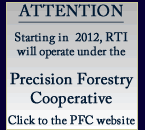 |
 |
 |
 |


BioEnergy and BioFuel
|
Under the Washington State Governor’s Climate Change Challenge (Executive Order 07-02), direction was given to assess and develop renewal energy alternatives. Of the alternatives that are possible, biomass conversion into bioenergy and/or biofuel comes second only to hydro power as a source of renewal energy within the State. Biomass can be obtained from many sources including agriculture, forestry and municipal solid waste (MSW). Forest management residues, typically burned in piles after timber harvests, represent a large source of woody biomass that is currently underutilized and could be available as a carbon neutral energy feedstock as a replacement for fossil fuel.
Biomass, Bioenergy, and BiofuelBiomass - Plant material, vegetation, forestry byproducts, or agricultural waste used as a fuel or energy source. The organic materials produced by plants, such as leaves, roots, seeds, and stalks. In some cases, microbial and animal metabolic wastes are also considered biomass. The term "biomass" is intended to refer to materials that do not directly go into foods or consumer products but may have alternative industrial uses. Common sources of biomass are (1) agricultural wastes, such as corn stalks, straw, seed hulls, sugarcane leavings, bagasse , nutshells, and manure from cattle, poultry , and hogs; (2) wood materials, such as wood or bark, sawdust , timber slash, and mill scrap; (3) municipal waste, such as waste paper and yard clippings; and (4) energy crops, such as poplars, willows, switchgrass, alfalfa , prairie bluestem, corn ( starch ), and soybean (oil). (from Answers.com) Bioenergy - Renewable energy made from materials derived from biological sources. There are three major ways in which the energy in plants is utilized: direct burning, conversion to gas, and conversion to alcohol. Biofuel - Defined broadlybiofuel is solid, liquid, or gas fuel consisting of, or derived from biomass.
Streaming Video Presentations
|





